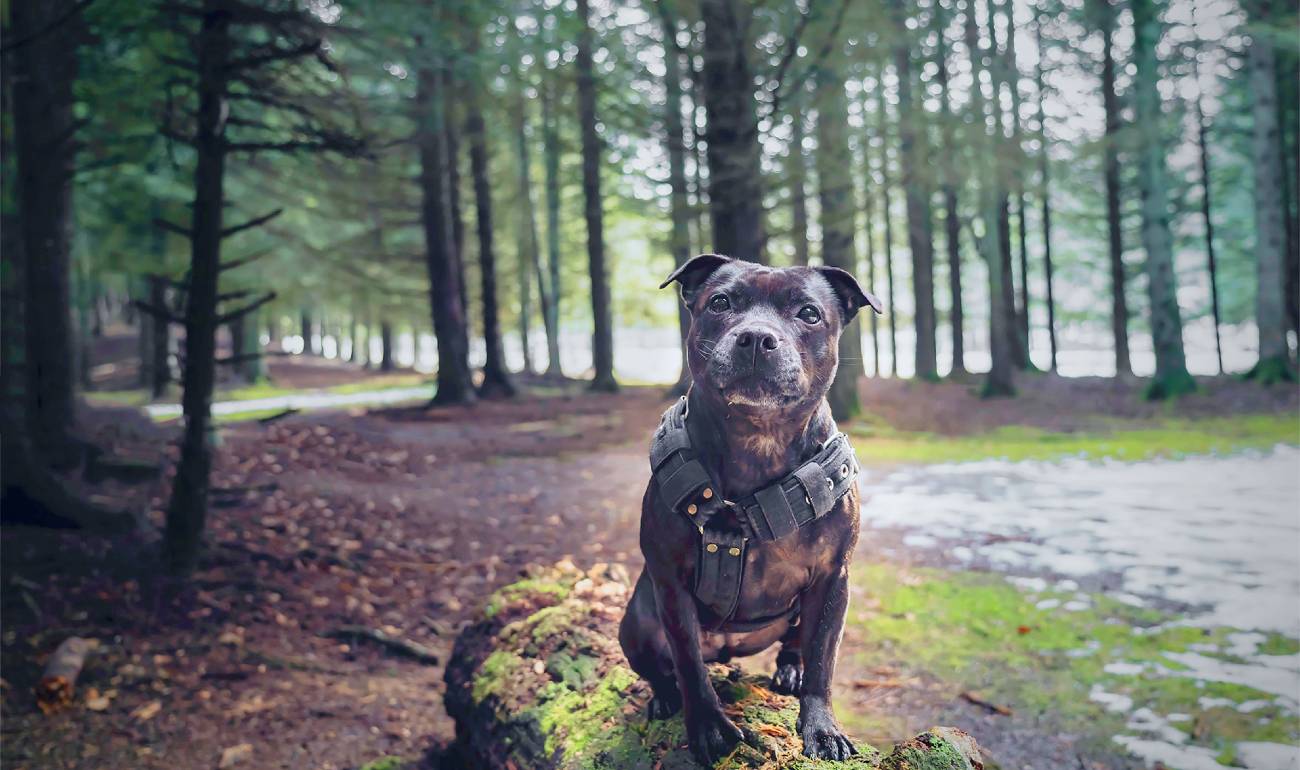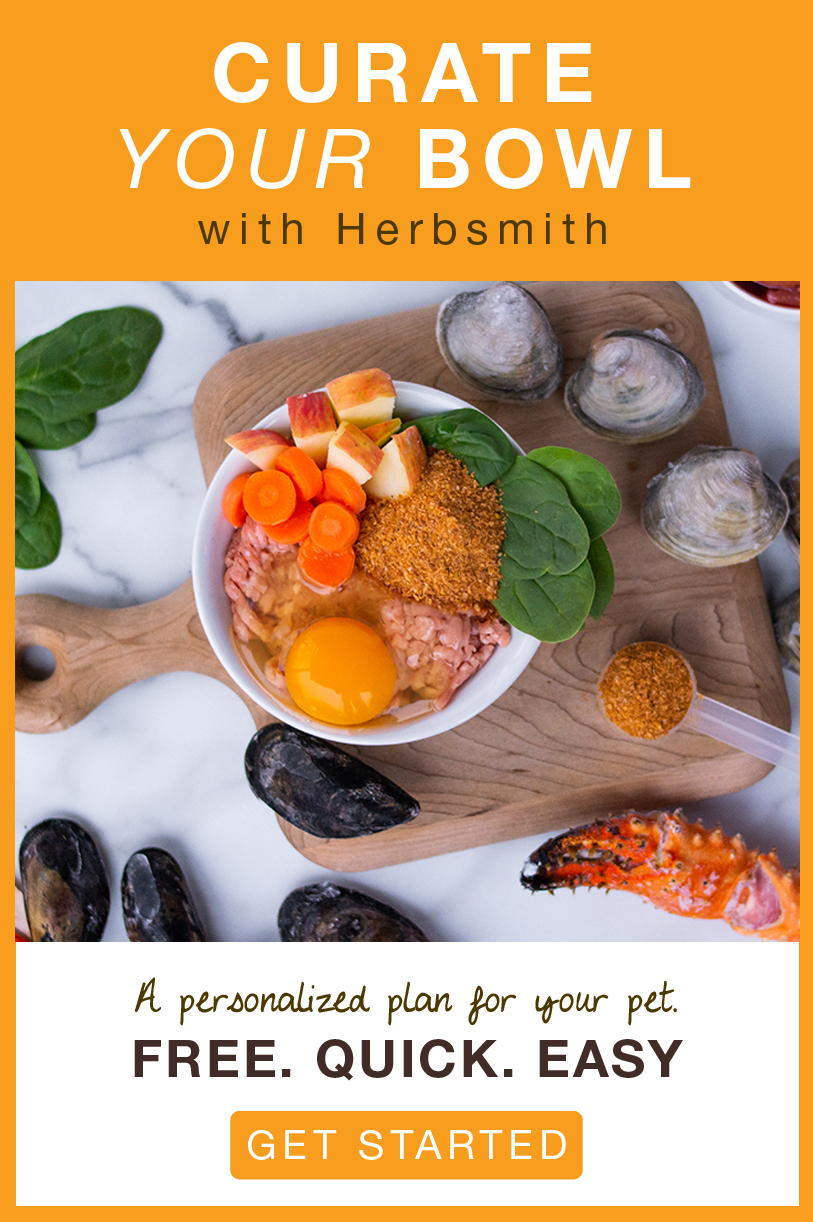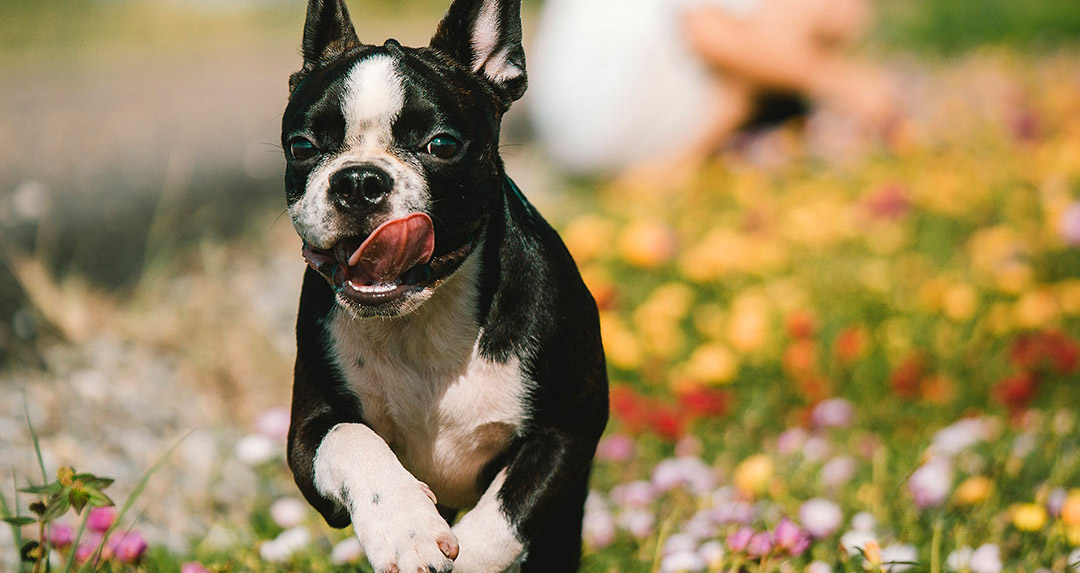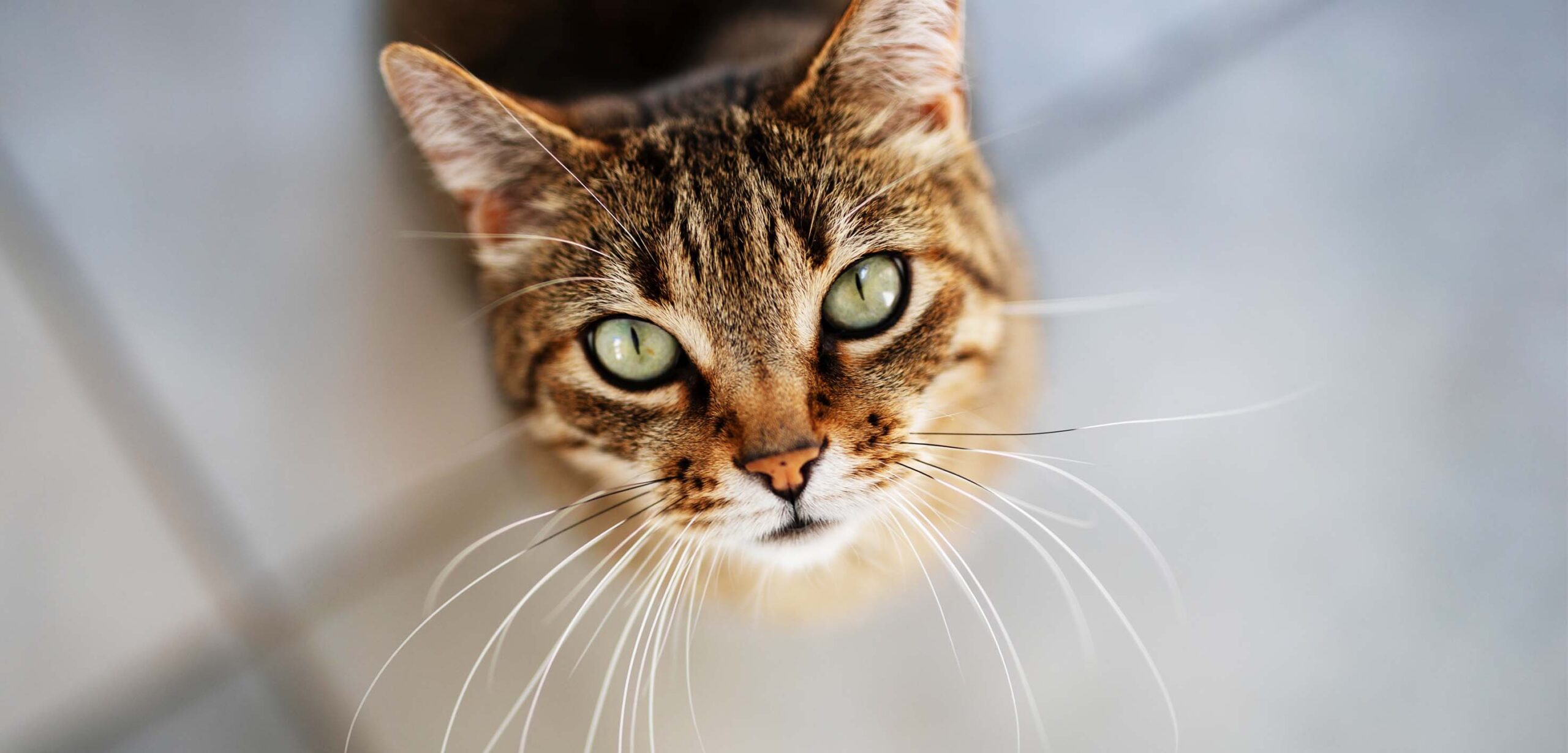Whether you’re welcoming a new bundle of fluff or you’re a pro who wants to brush up, we’ll walk you through how to care for your pup — and a big part of that is health.
You’re probably thinking yearly exams with your vet, vaccinations, and heartworm prevention — and that’s a great place to start! But there is so much MORE to consider — and so much MORE you can do to help your four-legger be his very best.
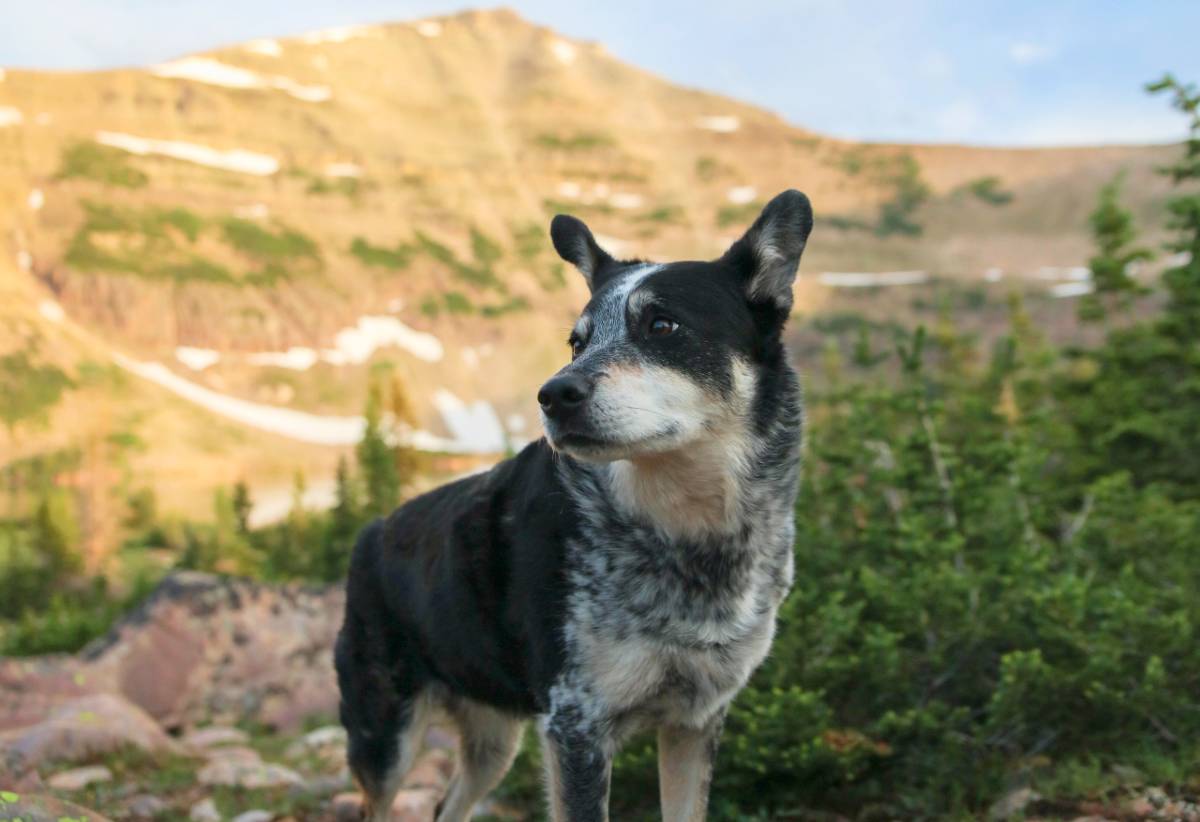
On The Agenda
Start With Diet
Health starts with what’s in the bowl. Period. One of the BEST things you can do to set your dog up for success is filling their bowl with the right nutrition.
The Value Of Real, Whole Food
Let’s get this out there now: there’s no such thing as human food or dog food. Food is food.
The best diet for your dog is a balanced real, whole food diet.
When you feed your pup real, whole food, you’ll know exactly what’s going in the bowl — which means you can provide your pup with exactly what they need to thrive. (If you’re not up for full-out DIY raw, try a freeze-dried whole food option).
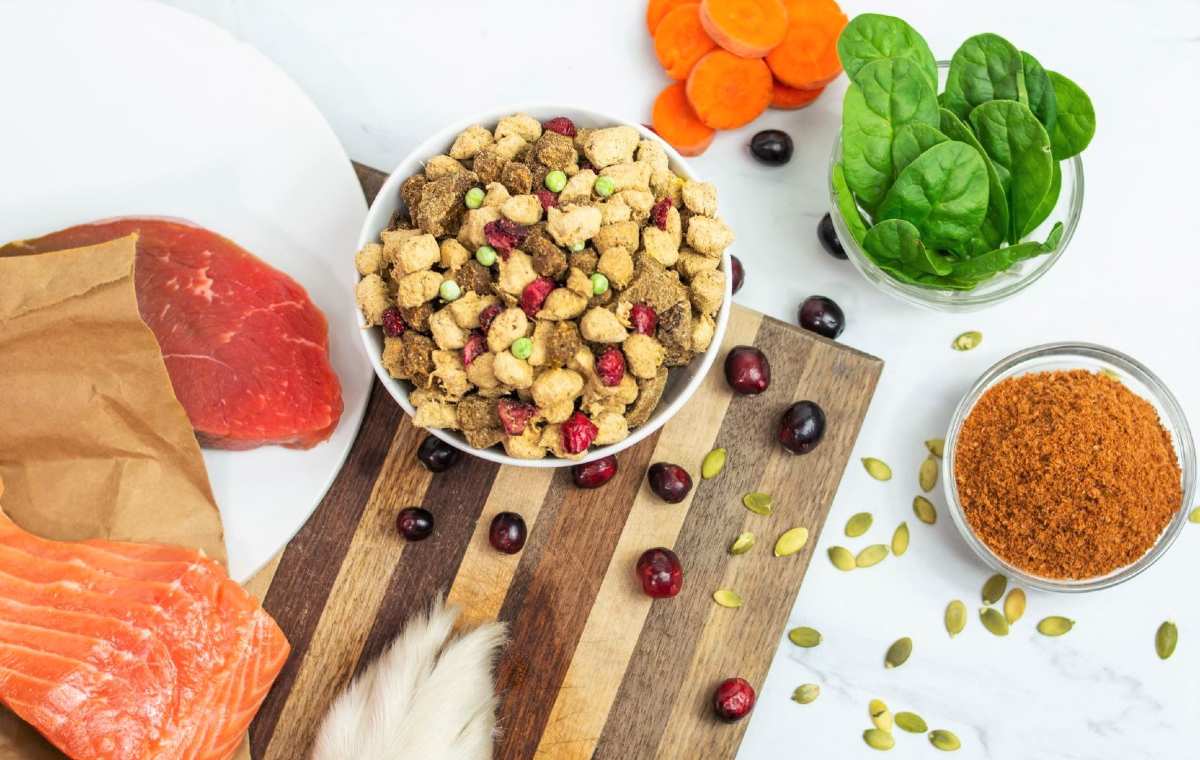
So what does your dog need to thrive?
Dogs are carnivores (Learn more with “What Makes A Carnivore”), which means they need a diet of at least 70-80% meat and a low percentage of carbohydrates (high amounts of carbs are not species-appropriate for your dog and can actually do serious damage — more on this in a moment).
Along with real meats, you should pack the bowl with fresh, antioxidant-rich foods.
Antioxidants are vital for your pup’s health because they help fight cell damage and disease. You can find them in brightly-colored fruits and veggies like blueberries and spinach (yep, go ahead and share that salad!).
Superfoods For Dogs:
- Spirulina
- Pumpkin
- Blueberries
- Cranberries
- Sweet Potato
- Pomegranate
- Spinach
- Broccoli
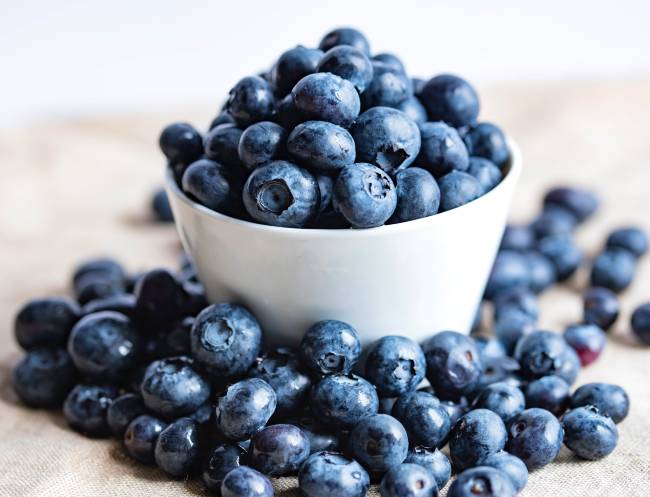
Beware Of Cheap Kibbles
A lot of pet parents choose to feed kibble, but unfortunately, kibble does not provide dogs with the best nutrition (and sometimes can be outright harmful).
Some concerns to be aware of:
- Kibble is a lot like junk food. It’s highly-processed and often has a shelf-life of decades.
- Kibble is species-inappropriate, which means it isn’t the right kind of food for dogs. A big reason for this is that it’s loaded with carbohydrate fillers. High-carbohydrate diets are not healthy for dogs and can lead to chronic inflammation, which can then lead to all sorts of diseases like diabetes and cancer.
- Kibble is often full of low-quality “ingredients” like meat and bone meals — which contain anything from unwanted byproducts from slaughterhouses to expired food from grocery stores to roadkill.
- During production, the kibble is heated to extremely high temperatures — up to four times — which kills any good nutrients (like antioxidants) and produces carcinogens and toxins.
The Bowl Basics That Every Dog Needs
Your first step is building a foundation of health with a species-appropriate diet (that’s high in animal protein, low in carbs).
But no matter what you feed (kibble, DIY raw, or somewhere in between), you can always do MORE to take your dog’s bowl — and health — to the next level. And it’s not hard. All you have to do is make some simple additions to the bowl.
Vital Additions To The Bowl
JOINT PROTECTANT
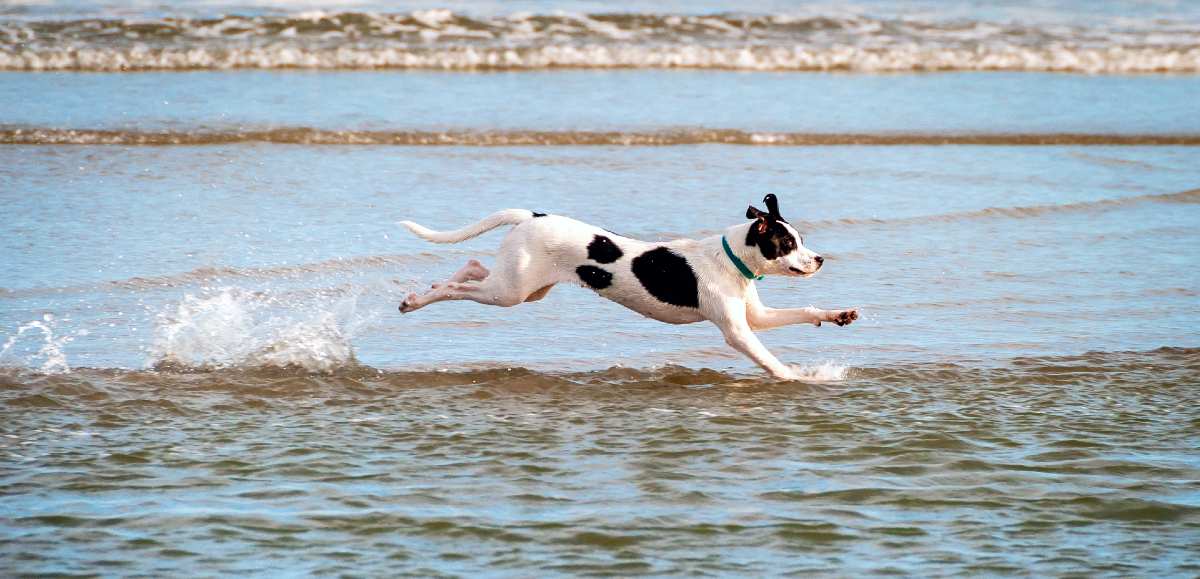
Zoomies and park romps cause wear and tear on the joints. And over time, chronic deterioration leads to arthritis. That’s why you need to nourish the joints now. Whether you’ve got a new puppy or a full-grown four-legger, your dog needs joint support with glucosamine. Glucosamine helps hydrate the joints for the ultimate range of motion and flexibility. (Learn More with “Supporting Joint Health”).
ORAL CARE

Just like humans, dogs need a preventive dental care routine (imagine if you didn’t brush your teeth your entire life?). When tartar builds up on the teeth, it can cause inflammation of the gums, which is painful and can allow bacteria to creep into the bloodstream. Establish an easy oral hygiene routine utilizing a sea algae dental chew — which breaks down tartar naturally and promotes a healthy mouth now. (Learn more with “Sea Algae: The Natural Ingredient Reshaping Dental Care For Dogs”).
GUT SUPPORT
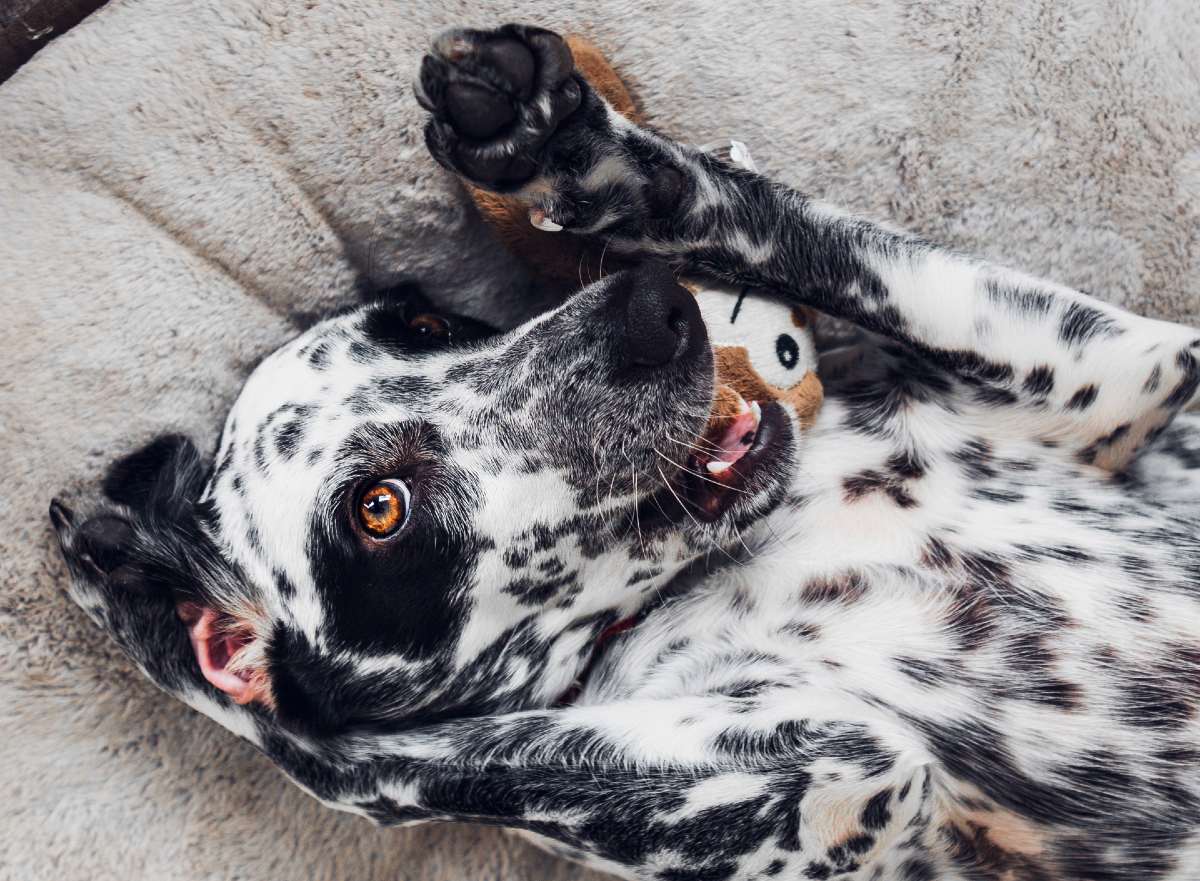
So much of your dog’s health is tied to the gut microbiome. An unhealthy gut not only leads to unpleasant symptoms (like diarrhea and bad gas), but it also can negatively impact the whole body — particularly the immune system. Add a therapeutic dose of probiotics and prebiotics to your dog’s daily routine to support gut & immune health. (Learn more with “A Simple Solve For Pets With Sensitive Stomachs”).
OMEGAS
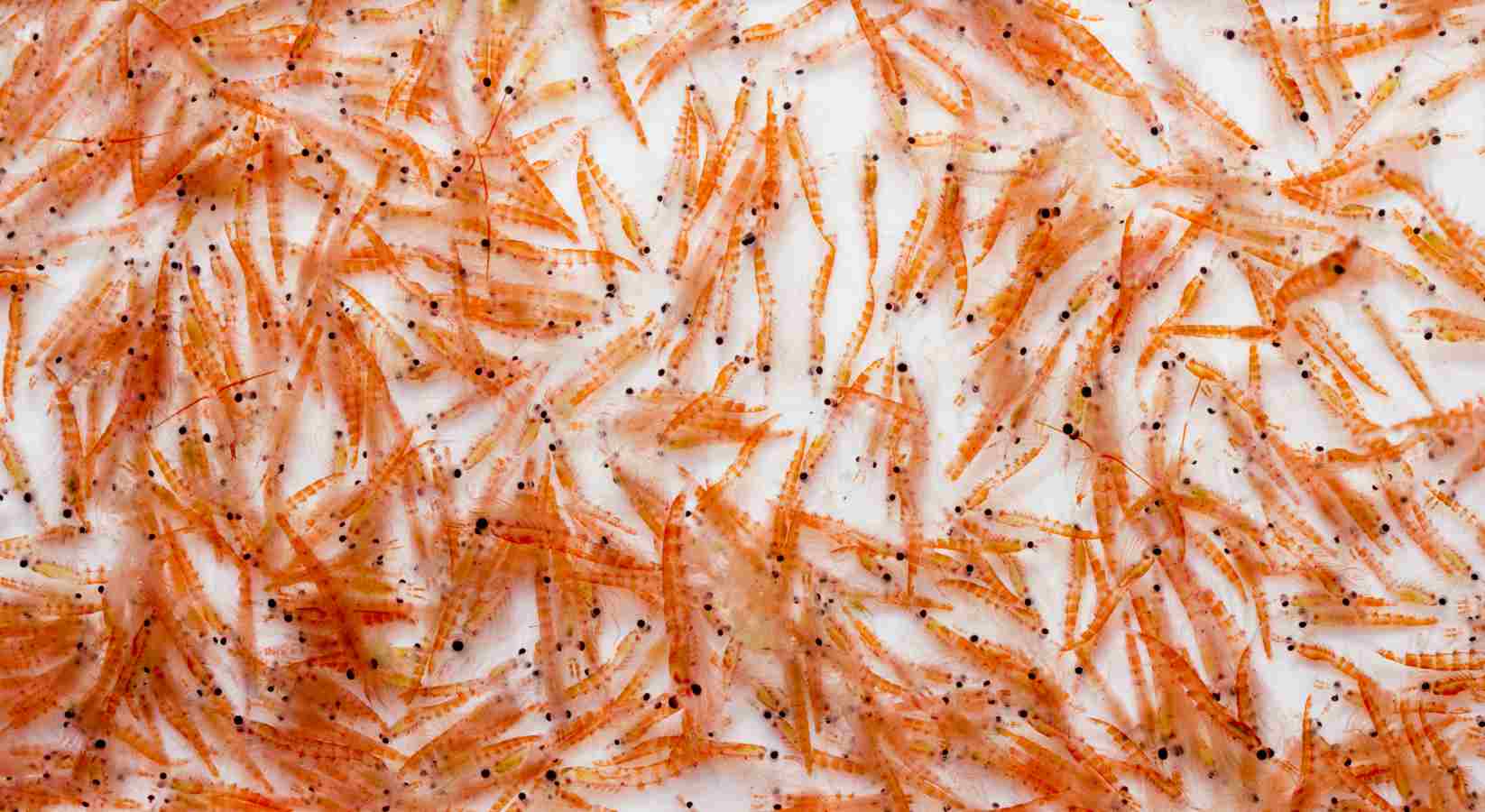
Essential omegas provide numerous benefits for your pup — from the heart to the skin to the immune system! No matter your pup’s age or breed — and no matter how healthy you think they are — start incorporating potent omegas. They are crucial for long-term health and wellness. (Learn more with “Omega Audit post *in progress”).
ANTIOXIDANTS

Yep, back on these again — because they are amazing. Antioxidants help prevent cell damage and disease before it happens — that is the power of proactive care. Absolutely feed antioxidant-rich foods, but then take it a step further. In order for your dog to get enough antioxidants to really benefit, add a super-concentrated source to the bowl. (Learn more with “Why Prioritize Antioxidants For Dogs”).
Curate The Bowl For Each Unique Dog
Once you’ve mastered the basics, you can start personalizing the bowl for your unique pup. Never forget that every dog is an individual! Every dog has unique, specific needs.
You can meet these needs by filling the bowl with targeted nutrition. You can address everything from allergies to anxiety. And keep in mind that your dog’s needs can (and will) change over time. So stay flexible, observant, and work toward personalizing the bowl.
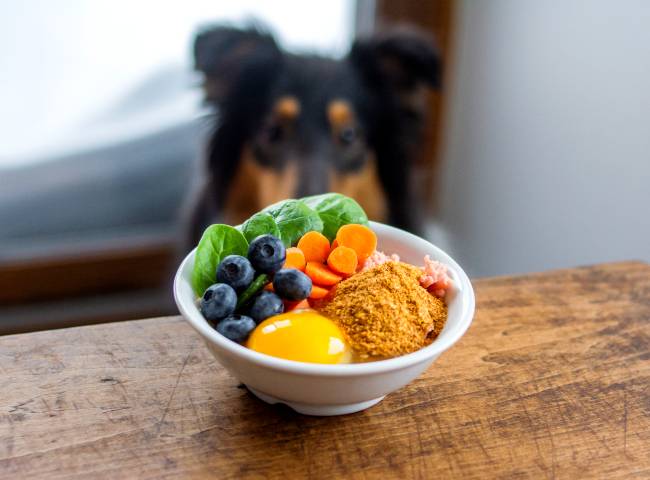
Prioritize Daily Exercise & Lean Body Weight
Your dog needs to move. True, some breeds have a greater need for intense exercise than others, so do keep this in mind when choosing a dog. But across the board, all dogs need exercise — so it’s important to build it into their daily routine.
Mental & Physical Exercise Is Vital — And Easy
It doesn’t have to be difficult or a chore. There are so many ways your dog can fit into your everyday life! Your pup isn’t picky — they just want to hang out with you and have some space to move.

Physical Exercise:
- Go for a walk or run.
- Let your dog out to play with the kids in the yard.
- Take your pup to the park (don’t forget the ball for fetch).
- Gardening? Have your dog join you.
- Bring your dog on outdoor outings — farmers market, picnics, hiking, and lake days.
- Let your dog play with your canine neighbors.
- Take your dog swimming!
Mental Exercise:
- Let them try stimulating/challenging/interactive toys (pro tip: rotating the toys will make them seem new!)
- Teach your dog some tricks!
- Take your dog somewhere new to explore.
- Try a sport like Flyball or agility courses.
- Explore scent work.
- Set up an obstacle course in your backyard.
- Play hide-and-seek.
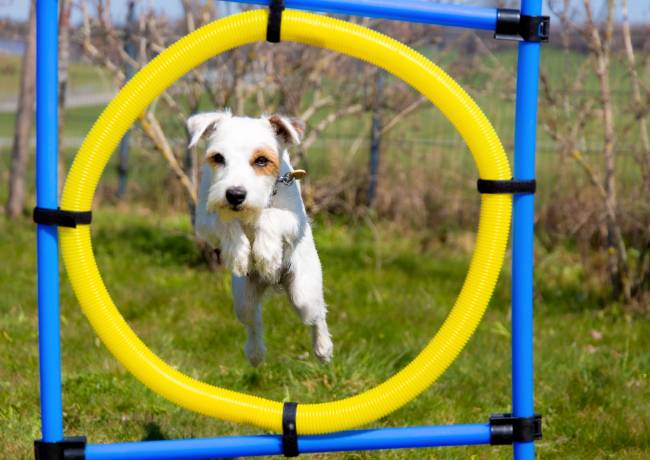
Lean Body Weight
As of 2018, over 50% of our dogs were obese — and obesity is closely linked to life-threatening diseases. Most of our pets are overfed and undernourished, which means they are both overweight and not receiving enough vital nutrients to thrive (Learn more with “3 Takeaways from a Vet’s Perspective on Chronic Disease and Nutrition”).
The good news is that you have the power to help your dog maintain lean body weight — and it’s super straightforward.
It all goes back to a species-appropriate diet in proper proportions (high in proteins, low in carbs). Feed that proper diet, incorporate daily exercise, and your dog will lose any excess weight. (No complex diet fads or Zumba classes necessary.)
Encourage Socialization
Puppies
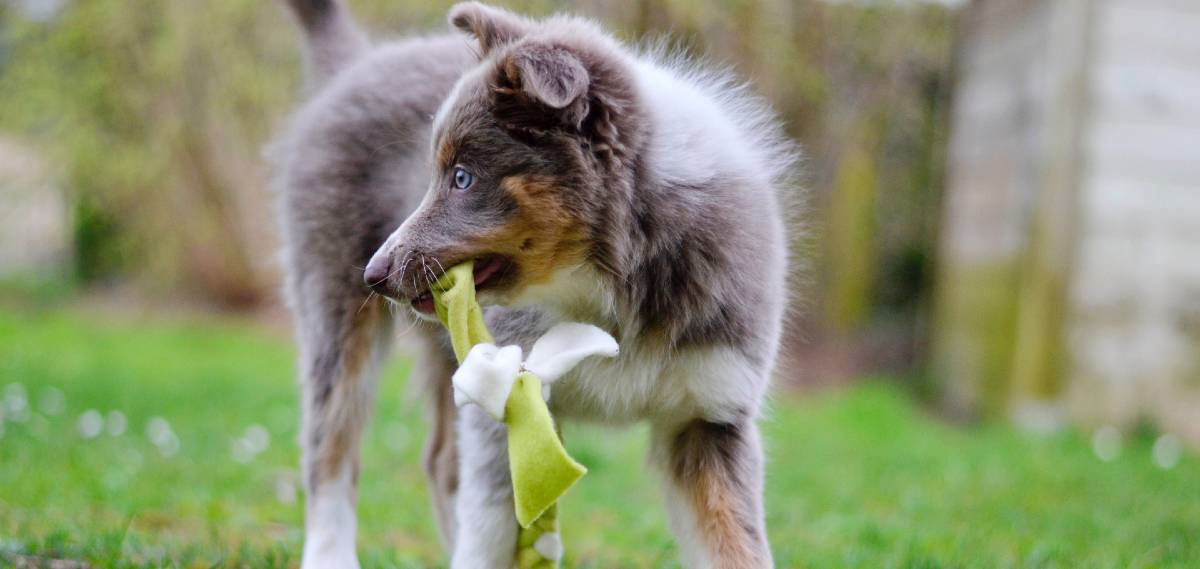
Just like human babies, puppies need stimulating and enriching environments to really thrive as they grow into adults.
They need to meet new people — big, small, loud, gentle. People with sunglasses and hats. Kids who cry and have tantrums.
They need to explore indoors and outdoors. Slip and slide on the tile floors. Roll in the grass and mud. Go for a car ride and poke their head out the window at the drive-through.
And they need to make friends and learn how to interact appropriately with other dogs.
Socialization teaches puppies to interact with new people, dogs, and situations, and it prepares them to cope with challenges, stress, and change. It sets them up for success in adulthood.
A lack of socialization and stimulation early on can lead to all sorts of problems later in life — from anxiety to aggression. So it’s crucial that you socialize your growing pup.
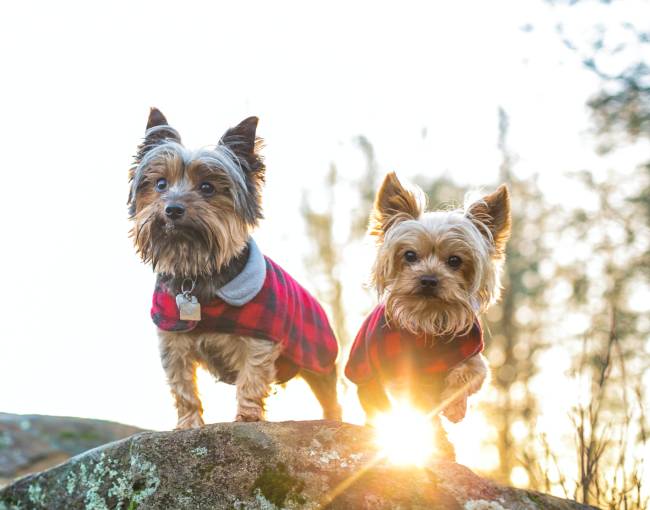
All that being said, go at a safe and appropriate pace for your puppy’s age and health.
Adult Dogs

Socialization is a bit different when you bring home an adult dog (particularly a rescue). Every dog is an individual — with a unique personality and set of life experiences.
So it makes sense that your approach is going to depend on the specific dog you adopt. It might take some time to figure out where your new adult dog is in terms of socialization.
Maybe you’re wary about your new dog meeting the neighbor pups. Maybe your new dog is highly reactive on walks. Or maybe your dog is fearful.
Whatever the case may be, go slow, be observant, and remember: your dog is unique, so there isn’t always a cookie-cutter solution.
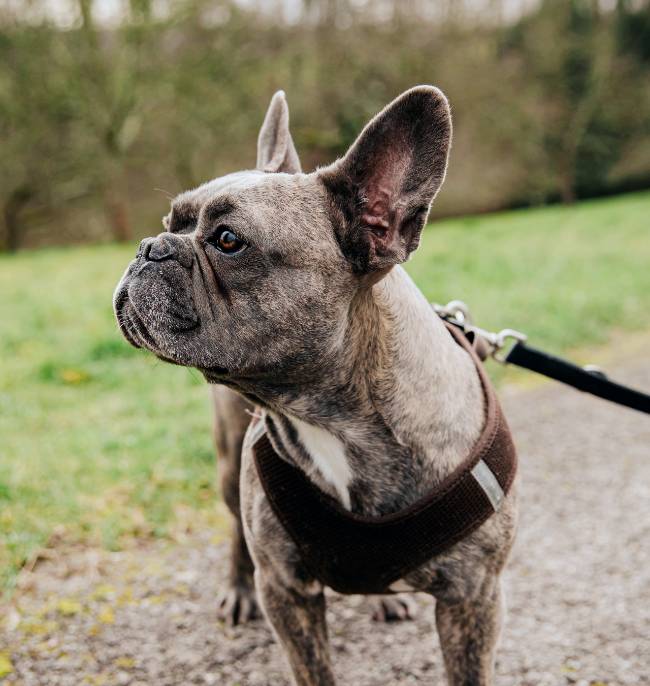
Make Training A Priority
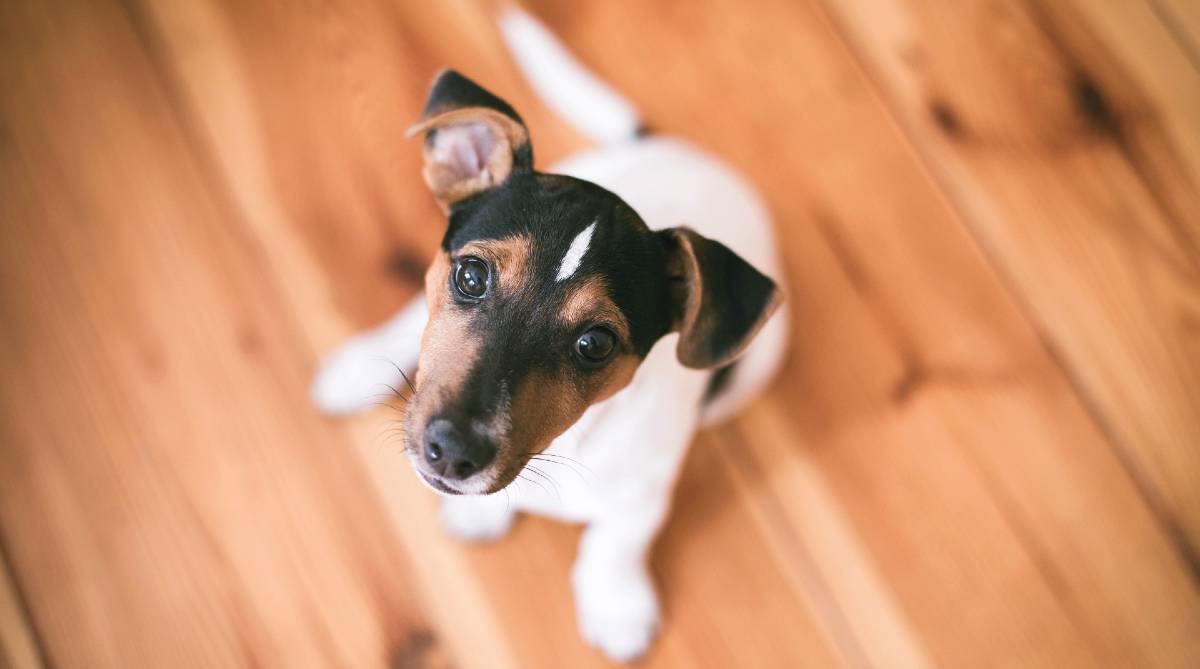
Training is all about learning to communicate with your dog — which is vital. From the very beginning when you start with potty training, you’re setting ground rules. This is crucial.
A need for training does not mean your dog is aggressive or difficult. Training should be a staple for every single dog. Teaching good habits early on is a lot easier than breaking bad habits down the road. So be proactive.
Beyond the basics, how much training you do is entirely up to you. But keep in mind that training can be a fantastic way to bond with your dog — and it can be a lot of fun. Maybe your dog would be a champ at agility or tricks or scent work! Don’t be afraid to explore.
Pick The Right Veterinarian (Or Two)
Traditional v. Holistic Medicine
Traditional medicine is probably what you think of when you picture a veterinarian. It includes vaccines, check-ups, surgeries, and medications when problems arise.
Holistic medicine focuses more on lifestyle, predispositions, and preventive care (taking steps proactively to address problems before they happen). This often involves personalizing the bowl with key nutrients and herbs.
The bottom line is that both forms can be extremely beneficial for your pet. Why choose between the two when you could incorporate the best of both?
In fact, having multiple veterinarians is exactly what we recommend.
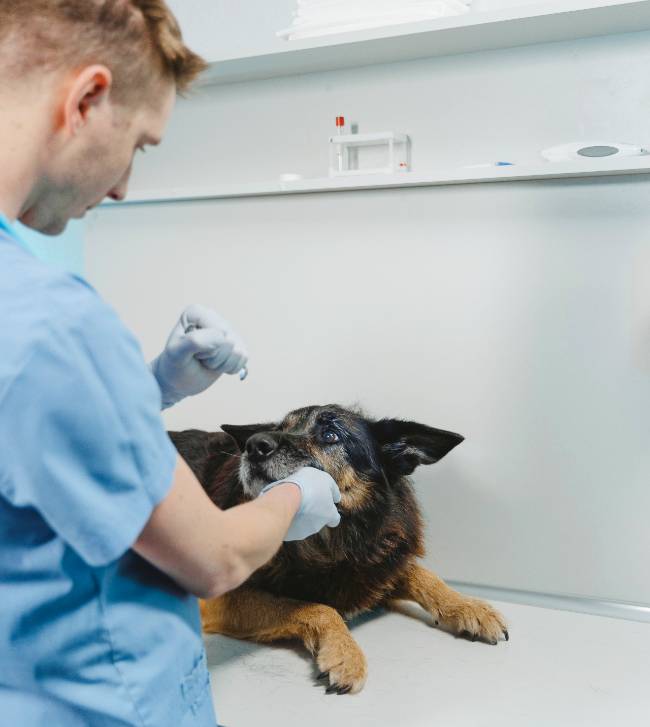
Build A Team For Your Pet
We are so fortunate to have such a diverse range of veterinarians who practice different modalities (from acupuncture to laser therapy to chiropractic).
Each veterinarian will approach your pet’s issues from a unique perspective and through a different lens. Having these multiple perspectives will ultimately allow you to provide a higher quality of care for your dog!
So instead of choosing just one veterinarian, build a team of experts to help your dog live her very best life. (Need help finding a vet? Start here).
Create A Health Plan
When you get established with a new veterinarian (or two… or three), make a health plan for your dog — yes, that means yearly checkups, but take it a step further.
Talk about diet. Talk about what additional nutrients and herbs you can add to the bowl to really help your pup thrive. Talk about your dog’s predispositions, red flags to watch out for, and ways to improve your pup’s day-to-day life.
This is the foundation of preventive care — and we are all about it. Instead of just reacting when problems arise, be proactive. Take steps to keep your dog healthy instead of just reacting when issues come up down the road.

Minimize Toxins
Wait… what toxins? Toxin exposure is more common than you might think.
Environmental Toxins

Think about your dog’s daily routine. They don’t wear shoes to protect them from the pavement. Sometimes they eat grass. They lick everything.
So they’re definitely encountering environmental toxins in their day-to-day life — including pesticides, cleaning products, phthalates from plastic, and contaminants like radon in drinking water.
Carcinogens In Kibble
When ingredients in kibble are heated to high temperatures, carcinogens and toxins are produced. Plus, check this out.
Excess Vaccinations & Prevention
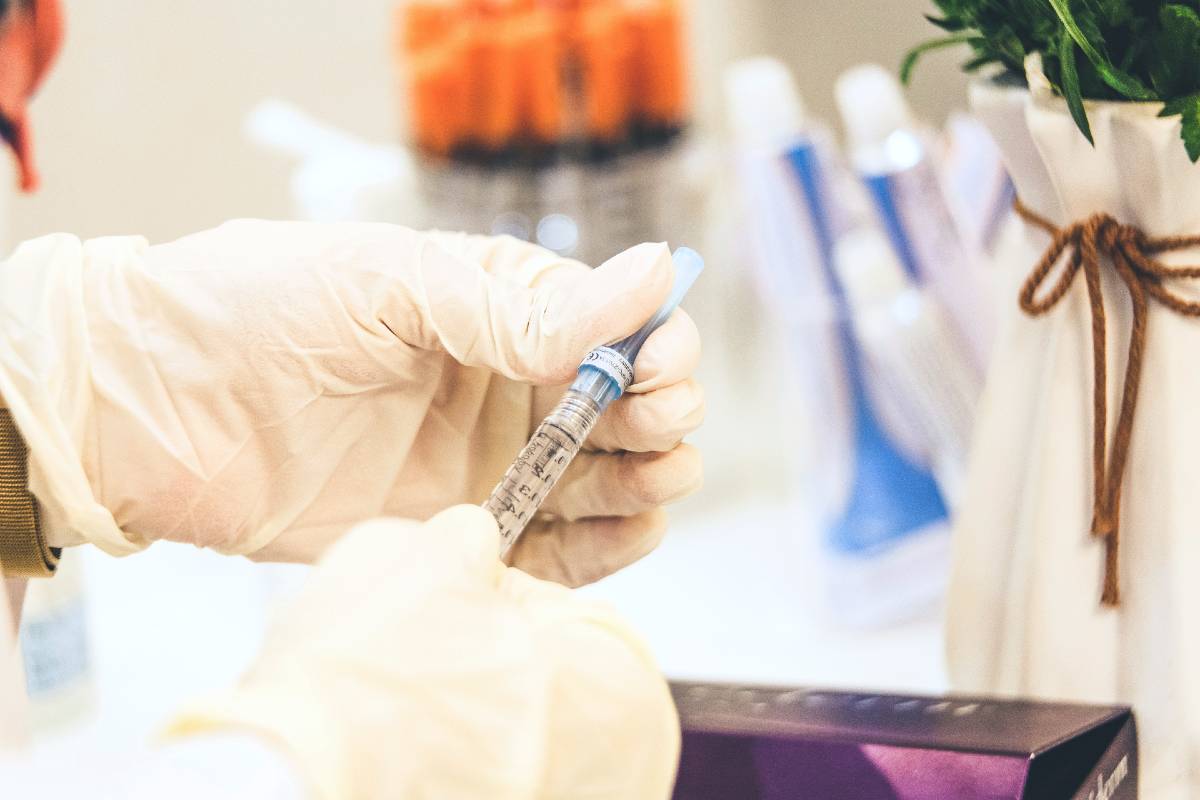
Vaccines do a great job of protecting your pup, but they do introduce toxins into the body. And sometimes, vaccines are administered in excess.
Think about humans — we don’t get all our vaccines annually. That would be too much — and unnecessary. Consider running a titer before giving your dog additional vaccines to make sure your dog really does need the vaccine.
Similarly, flea/tick/heartworm prevention treatments do their job beautifully, BUT you are still putting chemicals on and into your dog’s body every month.
We’re not saying don’t take these protective measures, but do consider alternatives when you’re weighing the pros and cons.
Add Milk Thistle

It’s not realistic to completely eliminate all toxins (though absolutely do your best to minimize exposure as much as you can).
What you can do is add Milk Thistle to help your dog’s body detoxify. Milk Thistle supports the liver, working as a protectant and detoxifier and helping the body flush out toxins. You can use it year-round or for just a few days before and after an exposure like a vaccine.
Speak Your Dog’s Language
This is actually pretty straightforward — and there’s a good chance you’ve already started to master it!
Think about it this way: you can still communicate with somebody who doesn’t speak English. You would know what a non-English speaker meant if they started shouting, scowling, and shaking their first, wouldn’t you?

Your dog absolutely has language and is constantly communicating with you. Pay attention to her body language, behaviors, and expressions to get to the root of what she is trying to tell you.
Growling and baring teeth? You know what that means. Back off. No words necessary.
Wagging and wiggling like crazy when you get home? You know what that means, too — in fact, words probably can’t adequately capture the absolute joy at that moment when your dog first sees you walk through the door.
Be empathetic, observant, and patient — and you and your dog will find common ground.
Support A Happy Attitude
Dogs Are Extremely Perceptive

Dogs are all about living a happy, low-stress life (stressed-out humans should probably take some notes!).
We often lean on our pups as our support systems because dogs are incredibly perceptive and wonderfully capable of soothing and caring for their humans.
But the flip side is that dogs are extremely sensitive to stressful environments. When we’re stressed, it impacts them big time.
Be mindful of how your home environment is affecting your dog — especially through times of change and stress. During particularly stressful periods, take some extra time to reassure and bond with your pup (an extra walk or head scratch, perhaps?).
Purpose And Play

Dogs LOVE having a job and purpose (beyond being adorable). Ever wondered why they like playing fetch so much? It’s their job to go get that ball!
Playtime and mental gymnastics are vital for your dog’s well-being. Rotate new and interactive toys, teach them a new trick or take that frisbee to the park.
It isn’t hard to keep your pup happy — so build in some extra playtime, try a new training exercise, and of course bring on the belly rubs.
Becoming a pet parent might be overwhelming at first — and it’s true, it’s a lot of responsibility. But the most important thing is that you’re crazy about your dog (same here) and you’re willing to put in the work to help them live their best life!
(And hey, when you make a mistake, dogs are pretty forgiving — especially if you bring treats.)
Share this Post
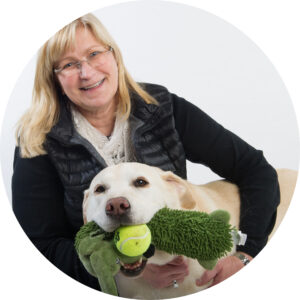
Dr. Chris Besent
Chris Bessent, DVM, MSOM, Dipl. OM, L.Ac. has over thirty years of experience in veterinary medicine including certificates in veterinary acupuncture, veterinary chiropractic and veterinary Chinese herbology. Imbued with Eastern philosophy and the knowledge that food is the foundation of health, Dr. Bessent also received her degree in veterinary nutrition and began to formulate recipes fit for a carnivore from nothing but whole foods. Currently, she divides her time between the Simple Food Project and Herbsmith, both of which are owned and operated out of her facilities in southeastern Wisconsin.

Hayley - Content Writer
Hayley is a freelance writer based in Northern California. (Writing for the Herbsmith is her favorite, but don't spread it around.) She enjoys riding horses, taking road trips, and eating grilled cheese sandwiches. Her foster dogs have mixed feelings about the spinach she keeps trying to sneak into their bowls.

Kayla - Editor
Kayla is the Content Editor for Herbsmith. She has a cat named Professor Cat-Faced Meowmers, who goes by Kitty, and a goof of a dog, named Duck. She stays busy biking trails, playing board games, and searching for the next best craft beer.
